EMST launches two exhibitions by iannis xenakis
The National Museum of Contemporary Art (EMST) launched Sonic Odysseys, the first major exposure in Greece by Iannis Xenakis (1922-2001), avant-garde composer, music theorist, architect, engineer, mathematician and one of the most progressive creative thinkers and cultural practitioners of the second half of the 20th century. The contemporary museum is also presenting a second exhibition entitled Iannis Xenakis and Greece, which explores the controversial relationship with his ancestral homeland. Both shows opened to the public on June 29, 2023 and will continue until January 7, 2024.
Co-produced by the EMST and the Philharmonie de Paris, the Iannis Xenakis exhibition focuses on the most important and revolutionary work of his visual, literary, architectural and musical production while shedding light on his personal history by contextualizing the composer in his time and in the world. political and cultural movements that defined him as an artist. Based on the archives of the Xenakis family, the exhibition is structured around six chapters, centered on several major musical and architectural works. Featuring both personal and artistic material, a thematic and chronological narrative thread highlights his rich and expansive creative vision, invites the visitor to gain insight into his tumultuous personal history, reveals the multitude of his ecumenical interests through re-enactment from his library and takes us on a journey into the unique universe of Xenakis to discover his vast masses of sound and his ultra-modern multidimensional spatial and musical universes.
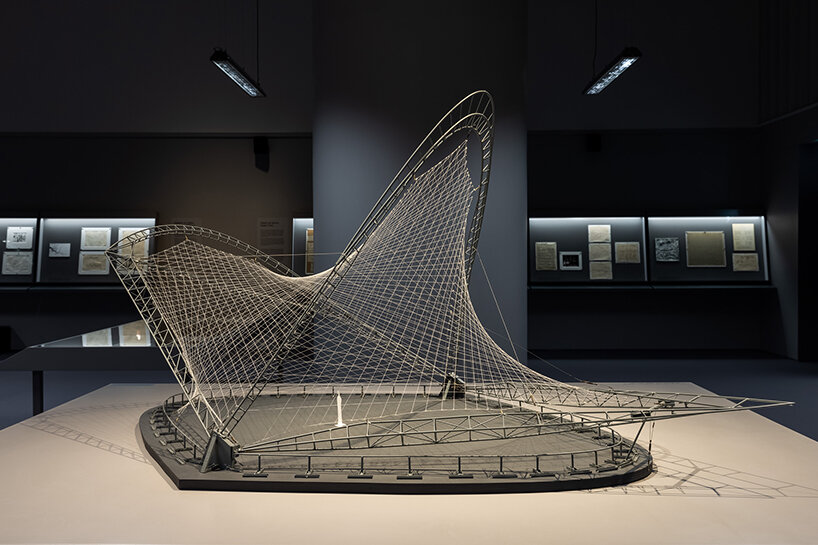
Iannis Xenakis: Sonic Odysseys | view of the installation (detail): Diatope de Beaubourg, 1977 (arch. model)
courtesy of the Rijksmuseum | image © Paris Tavitien
Sound odysseys: from composer to architect and mathematician
In the 1950s, Xenakis pushed the boundaries of contemporary music and created a unique musical genre. Instantly recognizable despite being in constant reinvention and revolution, his radical music is, in essence, a reference to Antiquity, an ode to nature and the elements, a tribute to the most extreme modernism and is visionary in its use of technology. Although widely acclaimed internationally, his work has not yet been presented so extensively in Greece, and the major exhibition represents the most comprehensive work of the avant-garde composer, architect and mathematician in Greece and the world. The initiative of the Xenakis exhibition at EMST (find out more here) is part of one of the museum’s missions, which is, among other things, to highlight the work of eminent, even lesser known but significant, cultural actors from the Greek diaspora.
Xenakis pioneered mathematical models in music, such as the application of game theory; he was – and remains – a key influence on the development of electronic and industrial music and one of the innovators of multimedia art. He combined music with architecture, creating music for pre-existing spaces but also designing spaces for specific musical compositions and performances, reconfiguring the classical spatial arrangement of the orchestra. He was also one of the first to deploy computers for music composition. The exhibition highlights the multifaceted and multidisciplinary practice of this singular figure – a true mathematician – and highlights the extent of his prolific work, demonstrating to what extent he was ahead of his time, as his vision was unprecedented .
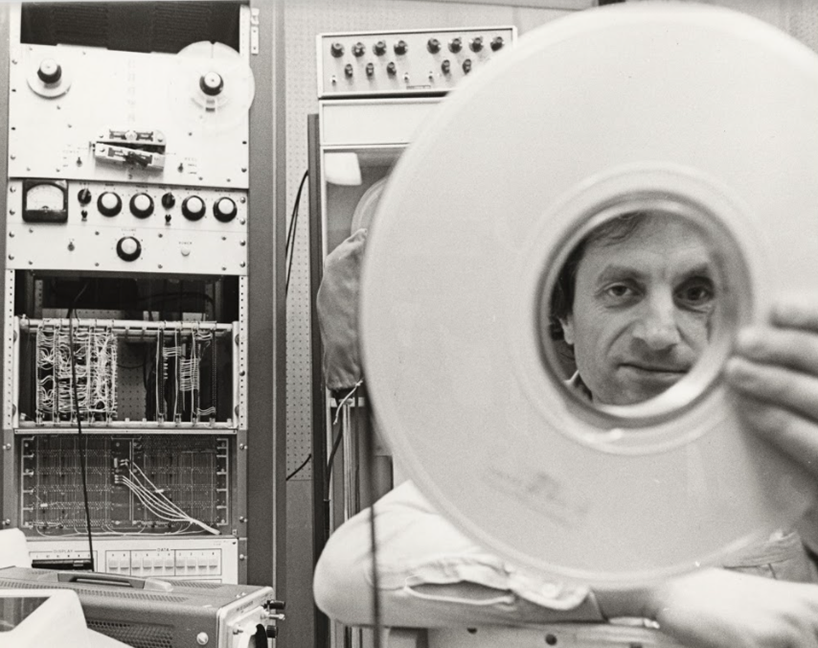
Iannis Xenakis at Indiana University (1972) | © Xenakis Family Collection
In 1947, during the civil war and after obtaining his engineering degree at the Athens Polytechnic, Xenakis fled to Paris as a wanted man for his resistance activities, only to return 27 years later after the fall of military dictatorship in 1974 and receiving an official pardon after nearly three decades of voluntary exile. Until his death in 2001, he composed more than 150 works – from vocal, choral and orchestral music to chamber and solo music for piano, strings and percussion – and electronic music is written on the UPIC, a computerized music composition tool he created. designed to translate graphic images into musical results.
Xenakis also left behind a small but striking architectural work, created while he worked with Le Corbusier in the latter’s studio in Paris in the 1950s. The most iconic of these is the Philips Pavilion, whose Corbusier loaded it, for the Universal Exhibition of Brussels 1958, with music by Edgar Varèse (his Poème Electronique), while at the entrance to the Pavilion the composition Concret PH by Xenakis could be heard. The exhibition includes the original model of the architectural structure.
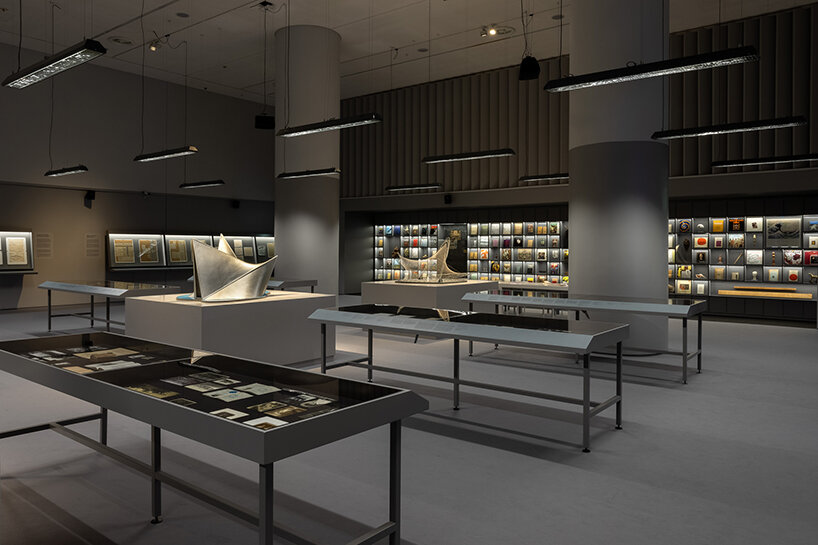
Iannis Xenakis: Sonic Odysseys | installation view | image © Paris Tavitien
organize the major EMsΤ exhibition around six chapters
The exhibition is organized around six chapters, focusing on some of Xenakis’ most notable musical and architectural works. A thematic and chronological narrative thread invites the visitor to immerse themselves in the unique world of Xenakis through sight and sound. The exhibition includes 20 musical and architectural opuses, 220 original and archive documents: photos, models, scores and personal objects, as well as several audiovisual works.
ΤΗΕ EARLY YEARS: Featuring numerous objects from Xenakis’s collection, the exhibition provides insight into the way the composer worked as well as his musical, literary and visual references, including his interest in ancient Greek, pre-Columbian, African and Asian cultures. . Another major source of inspiration is also apparent, nature, in the form of scores, works of art or personal photographs. Several musical pieces by his life. These objects also tell of his birth and childhood in Romania, his school years spent at the boarding school on the island of Spetses, the resistance during the Second World War, the injury that will mark him for life, followed by his exile and the death sentence. which he received in absentia. All these elements contributed to the formation of the Xenakian language.
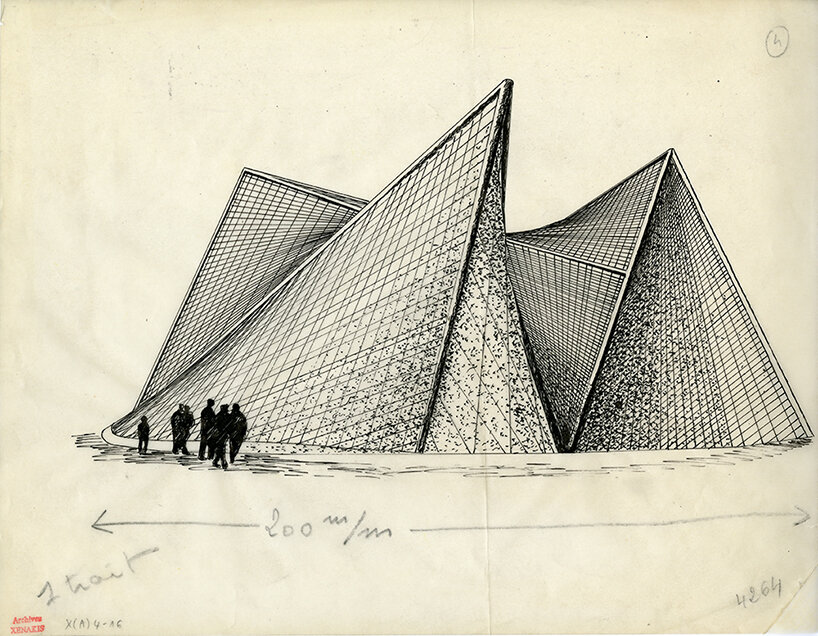
Iannis Xenakis for the Philips Pavilion (1957) | © Xenakis Family Collection
PHILIPS PAVILION: The visitor is invited to (re)discover the emblematic Philips Pavilion, Xenakis’ first flagship architectural work, and his interdependent orchestral composition for 61 instruments, Metastasis, considered his first mature work, both anchored in mathematics and marking the beginning of The artistic recognition of Xenakis. Furthermore, archive documents illustrate his meetings with Le Corbusier, Edgar Varèse and Olivier Messiaen. Alongside the model of the Pavilion, an immersive scenography refers to the 1958 show, designed around images of Le Corbusier and the music of Varèse, alternating with the electronic piece by Xenakis, Concret PH, played at the entrance . The pavilion consisted of nine hyperbolic paraboloids instead of flat surfaces and can be considered a precursor to “parametric architecture”, in which geometric shapes are designed by computers to produce complex architectural designs. The Philips Pavilion was one of the first so-called “multimedia” works.
ALLOYS: Engineer, architect, composer, mathematician and computer scientist, Xenakis was neither one nor the other exclusively. Advocating alliances between arts and sciences, his musical and architectural work reflects these different disciplines, reinforced by complementary dynamics. This chapter puts into perspective his relationship with the German conductor Hermann Scherchen, who contributed to his public recognition, and juxtaposes his large architectural projects with stochastic musical compositions, such as the undulating windows of the Sainte-Marie de La Tourette convent, which make echoing the musical matrices of Achorripsis or Pithoprakta.
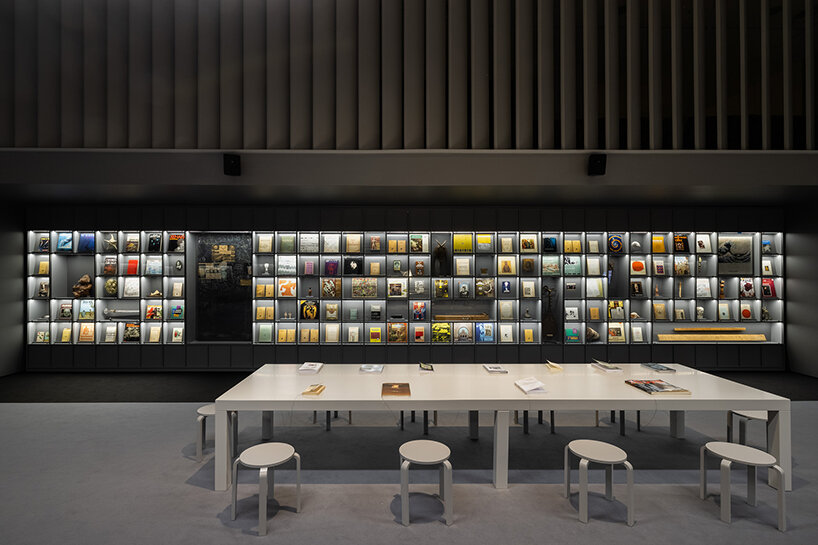
Iannis Xenakis: Sonic Odysseys | installation view (detail): books and objects from Xenakis’ personal library
courtesy of the Xenakis Family Archives | image © Paris Tavitien
POLYTOPES: The Polytopes – the multimedia spatial works that combine sound, light and live performances – encapsulate Xenakis’s interests and skills by combining all of these elements. Considered as part of his mature work, the Polytopes synthesize Xenakian thought. From the French pavilion of the Montreal Exhibition in 1967 to the Mycenae Polytope or the Beaubourg Diatope, both carried out in 1978, these ambitious and complex projects allowed Xenakis to reach a wider audience, who came to attend these spatialized shows mixing electronic or instrumental. with light installations. This section brings together architectural drawings, archival pieces and photographs that highlight these emblematic works, precursors of new media art or digital art today.
SPACE-TIME: If the description of Xenakis’ practice as being “in time” and simultaneously “out of time” refers to the understanding of musical time in the form of a succession of sonic events or autonomous temporal segments, this notion also contains a spatial dimension. vision of the temporal sequence. Likewise, several works presented in this section radically question sound spatialization, whether by placing the listener within the orchestra itself, such as Terretektorh, created in 1966 for the Royan International Contemporary Art Festival, or Hibiki Hana-Ma, composed in 1970 for the Tokyo World Expo and employed a complex loudspeaker system.
MACHINE AND DRAWING: The final chapter of the exhibition presents Xenakis’s exploration of machines and computing, an integral part of his eternal quest for the perfect tool capable of both performing complex calculations and capturing the graphic representation of phenomena sound. The most emblematic of these is the UPIC synthesizer, which he created at CEMAMu (Centre d’Etudes de Mathématique et Automatique Musicales), the music computing center founded by Xenakis in Paris in 1972 in collaboration with academics from several disciplines, including aesthetics, mathematics, computer science, philosophy and electrical engineering. The documents and archives in this section highlight the composer’s decisive contribution to electronic sound synthesis.


